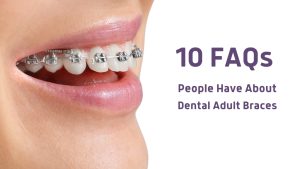The Basic Principles Of Legacy Orthodontics
The Basic Principles Of Legacy Orthodontics
Blog Article
Some Known Incorrect Statements About Legacy Orthodontics
Table of ContentsSome Ideas on Legacy Orthodontics You Should KnowThe smart Trick of Legacy Orthodontics That Nobody is Talking About6 Easy Facts About Legacy Orthodontics DescribedThe Facts About Legacy Orthodontics RevealedSome Known Questions About Legacy Orthodontics.
At Advanced Orthodontics, we offer patients with a all natural treatment experience. Furthermore, we use adjustable therapy routines, adaptable repayment alternatives and an enjoyable, pleasurable experience. leesburg invisalign. Phone call ( 480) 357-4900 today to find out more and timetable a visit.An orthodontist is a dental expert trained to identify, protect against, and treat teeth and jaw irregularities. They deal with existing conditions and are educated to determine troubles that might create in the future. Orthodontists deal with individuals of any ages, from youngsters to grownups. Individuals typically link an ideal smile with great health and wellness.
Malocclusion, or misaligned teeth, can result in oral issues, including dental cavity, periodontal disease, and hard or agonizing chewing. Not everyone is born with straight teeth. If you have a poor bite or large spaces between your teeth, you might desire to speak with a dental practitioner concentrating on orthodontic treatment.
Some Known Details About Legacy Orthodontics
( Photo Credit Score: DigitalVision/Getty Images) Orthodontists make use of dealt with and removable oral devices, like dental braces, retainers, and bands, to change the placement of teeth in your mouth. Orthodontic treatment is for oral irregularities, consisting of: Crooked teethBite issues, like an overbite or an underbiteCrowded teeth or teeth that are too far apartJaw misalignmentThe goal of orthodontic therapy is to improve your bite.
A healthy bite guarantees you can consume, chew, and talk correctly. While you might think of orthodontists as primarily for youngsters or teens who require dental braces, they can correct dental troubles at any kind of age. Orthodontists participate in university, dental school, and orthodontic institution. After college graduation, they spend 2 or 3 years in an orthodontic residency program.
All orthodontists are dental experts, yet not all dentists are orthodontists. Orthodontic residency programs offer intensive, focused instruction for dental specialists. They focus on two locations: Just how to properly and safely move teeth How to properly lead growth in the teeth, jaw, and faceOnce an orthodontist has actually finished training, they have the choice to come to be board certified.
All about Legacy Orthodontics
Imbalance, or malocclusion, is the most typical reason people see an orthodontist. It is genetic and is the result of size distinctions between the top and lower jaw or in between the jaw and teeth. Malocclusion causes tooth overcrowding, a misshapen jaw, or pop over to this site uneven bite patterns. Malocclusion is typically treated with: Your orthodontist affixes metal, ceramic, or plastic square bonds to your teeth.
Some individuals need a headgear to help relocate teeth right into line with pressure from outside the mouth. A retainer is a customized gadget that maintains your teeth in location.
They're frequently used on youngsters. They can develop additional space in the mouth without having to pull teeth. If you have a serious underbite or overbite, you may need orthognathic surgery (also called orthodontic surgical treatment) to extend or reduce your jaw. Orthodontists use cables, medical screws, or plates to support your jaw bone.
You might need to see an orthodontist if you have: Crowding or not sufficient space for all of your teethOverbite, when your top teeth come by your base teethUnderbite, when your bottom teeth are as well much forwardSpacing or concerns with gapsCrossbite, which is when your top teeth fit behind your base teeth when your mouth is closedOpen bite or a vertical space in between your front bottom and top teethMisplaced midline, when the facility of your bottom and top teeth do not align Dealing with a dental malocclusion can: Make attacking, eating, and talking easierImprove the proportion of our face and your overall appearanceEase pain from temporomandibular joint conditionsDifferent your teeth and make them simpler to cleanse, helping avoid dental cavity or dental caries It's usually a dental professional who first notices misaligned teeth throughout a regular test.
The Greatest Guide To Legacy Orthodontics

Throughout your first orthodontic examination, you'll likely have: A dental examPhotos taken of your face and smileDental X-raysPanoramic (360 degree) X-rays of your face and headImpressions to produce molds of your teethThese examinations will certainly help your orthodontist understand exactly how to proceed with your treatment. orthodontics. An orthodontist is a dental professional who's had training to treat your teeth and jaw
An orthodontist is focused on your bite, so something like a chipped tooth would certainly be managed by a dental expert. Orthodontists are focused on your bite, or the means your teeth fit together, and the straightness of your teeth.
Ever before wondered just how celebs always appear to have perfectly lined up teeth? Orthodontists are oral experts who focus on fixing abnormalities in the teeth and jaws.
The Single Strategy To Use For Legacy Orthodontics

While braces are one of the most generally recognized orthodontic treatment, orthodontists have a diverse toolkit at their disposal. The particular technique picked depends on the severity of the case, the client's age, and private choices. These reliable dental braces make use of a system of braces bonded to the teeth and connected by wires.
Clear aligners, like Invisalign, are a popular alternative for patients looking for a more discreet therapy choice. These detachable trays are personalized to gradually change the teeth's placement. Headwear may be made use of in conjunction with braces or aligners to use extra targeted pressures, specifically for fixing jaw disparities. In situations of narrow jaws, palatal expanders can be used to create area for proper tooth alignment.
Report this page